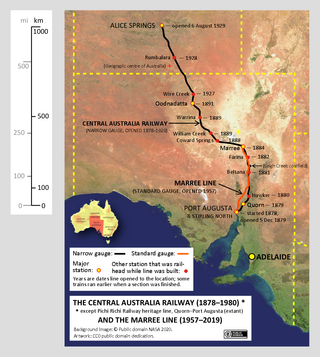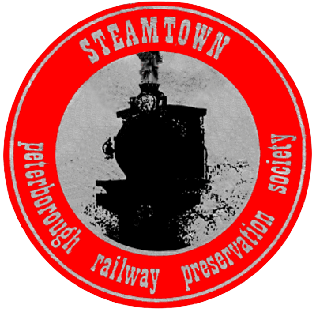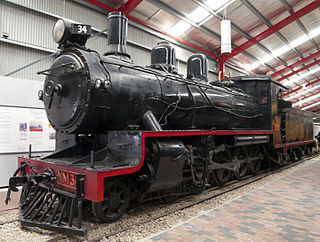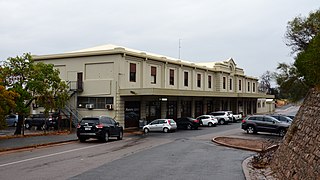
Pichi Richi Railway is a 39 kilometres narrow-gauge heritage railway in the southern Flinders Ranges of South Australia between Quorn and Port Augusta. For much of its length the line lies in the picturesque Pichi Richi Pass, where the line was completed in 1879 as work proceeded north to build a railway to the "Red Centre" of Australia – the Central Australia Railway.

The former Central Australia Railway, which was built between 1878 and 1929 and closed in 1980, was a 1,241 km (771 mi) 1067 mm narrow gauge railway between Port Augusta and Alice Springs. A standard gauge line duplicated the southern section from Port Augusta to Maree in 1957 on a new nearby alignment. The entire Central Australia Railway was superseded in 1980 after the standard gauge Tarcoola–Alice Springs Railway was opened, using a new route up to 200 km to the west. A small southern section of the original line between Port Augusta and Quorn has been preserved as the Pichi Richi Tourist Railway.

Pine Creek is a small town in the Katherine region of the Northern Territory, Australia. As at the 2021 Census there were 318 residents of Pine Creek, which is the fourth largest town between Darwin and Alice Springs.

The first railway in colonial South Australia was a line from the port of Goolwa on the River Murray to an ocean harbour at Port Elliot, which first operated in December 1853, before its completion in May 1854.

The North Australia Railway was a 509 km (316 mi) 1,067 mm narrow gauge railway in the Northern Territory of Australia which ran from the territory capital of Darwin, once known as Palmerston, to Birdum, just south of Larrimah. Initially its name was the Palmerston and Pine Creek Railway. The first section was opened 1889, the last in 1929. The railway closed in 1976.

The Commonwealth Railways were established in 1917 by the Government of Australia with the Commonwealth Railways Act to administer the Trans-Australia and Port Augusta to Darwin railways. It was absorbed into Australian National in 1975.

The Steamtown Peterborough Railway Preservation Society Inc. was a not-for-profit incorporated society that operated a heritage steam railway from Peterborough, South Australia, north along a section of the Peterborough to Quorn railway line, between 1977 and 2002. The society based its operations on the former South Australian Railways roundhouse at Peterborough and purpose-built sheds and yard at Peterborough West.
Railmotor is a term used in the United Kingdom and elsewhere for a railway lightweight railcar, usually consisting of a railway carriage with a steam traction unit, or a diesel or petrol engine, integrated into it.

The Commonwealth Railways NSU class was a class of diesel-electric locomotives built in 1954 and 1955 by the Birmingham Railway Carriage and Wagon Company, England, for the Commonwealth Railways to be deployed on the narrow-gauge Central Australia Railway and North Australia Railway.

The NT class were a class of diesel-electric locomotives built between 1965 and 1968 by Tulloch Limited, Rhodes for the Commonwealth Railways. They saw service on the Central Australia Railway and North Australia Railway, and on the Port Lincoln Division of Australian National.

The Commonwealth Railways NM class locomotive was a class of 4-8-0 locomotives of the Commonwealth Railways, Australia. The class operated on 1,067 mm narrow gauge lines in South Australia and the Northern Territory.

The Commonwealth Railways NB class originated in a shipment of four 0-6-0, 1067 millimetres gauge, saddle tank steam locomotives built by the Vulcan Iron Works of Wilkes-Barre, Pennsylvania. They were imported to Australia in 1916 for construction work at the naval base at Henderson, Western Australia. Their tractive effort was 9500 pounds.

The South Australian Railways T class was a class of 4-8-0 steam locomotives operated by the South Australian Railways. Several were sold to the Tasmanian Government Railways; some others operated on the Commonwealth Railways.

Pine Creek railway station is a disused railway station and museum on the former North Australia Railway in Pine Creek in the Northern Territory of Australia. The station is located 235 km (146 mi) from the original Darwin station, and was the southern terminus of the line until 1914. The station precinct is the most complete remaining example of infrastructure associated with the line.

Port Augusta railway station is a rail station located on the Adelaide-Port Augusta railway line in Port Augusta, South Australia.

The NDH class railcars are a class of self propelled diesel-hydraulic railcars designed by Commonwealth Engineering and built by the Gloucester Railway Carriage & Wagon Company in England for the Commonwealth Railways, Australia in 1954. They were known as Gloucester railcars.

The first South Australian Railways I class locomotive was built by Neilson and Company, Scotland for the Canterbury Provincial Railways, New Zealand in 1873 and numbered 9. In May 1878, the South Australian Railways (SAR) purchased it. The ship that transported it to South Australia was wrecked, but the locomotive was salvaged and entered service on the SAR in April 1879 as number 38. In 1880 or 1881, it was renumbered 48. It was allocated to "I" class – which was ultimately to be known as the "first I class" – in 1887 or 1888. In October 1905, the SAR withdrew it from service, then sold it in May 1906 to the South Australian Harbours Board for use in the construction of the Outer Harbour breakwater. It was scrapped in August 1909.

The eight members of the South Australian Railways U class were the first narrow-gauge 1067 mm locomotives on the South Australian Railways and the first of many steam locomotives built by Beyer, Peacock and Company for the railway. They entered service in 1876: four on the Port Wakefield to Hoyleton line and four on the Port Pirie to Crystal Brook line. Subsequently they operated on the Port Wakefield, Port Pirie and Port Augusta lines.

The South Australian Railways N Class locomotives were built in 1881 by the Baldwin Locomotive Works for the South Australian Railways (S.A.R.). They were rebuilt in 1904, which vastly improved their performance and completely changed their look from a typical American locomotive of the time to a more British one.

The South Australian Railways O Class (1st) locomotives were built by Baldwin Locomotive Works for the South Australian Railways (SAR). They entered service in 1881 on the SAR system and were both withdrawn and scrapped by 1904.





















